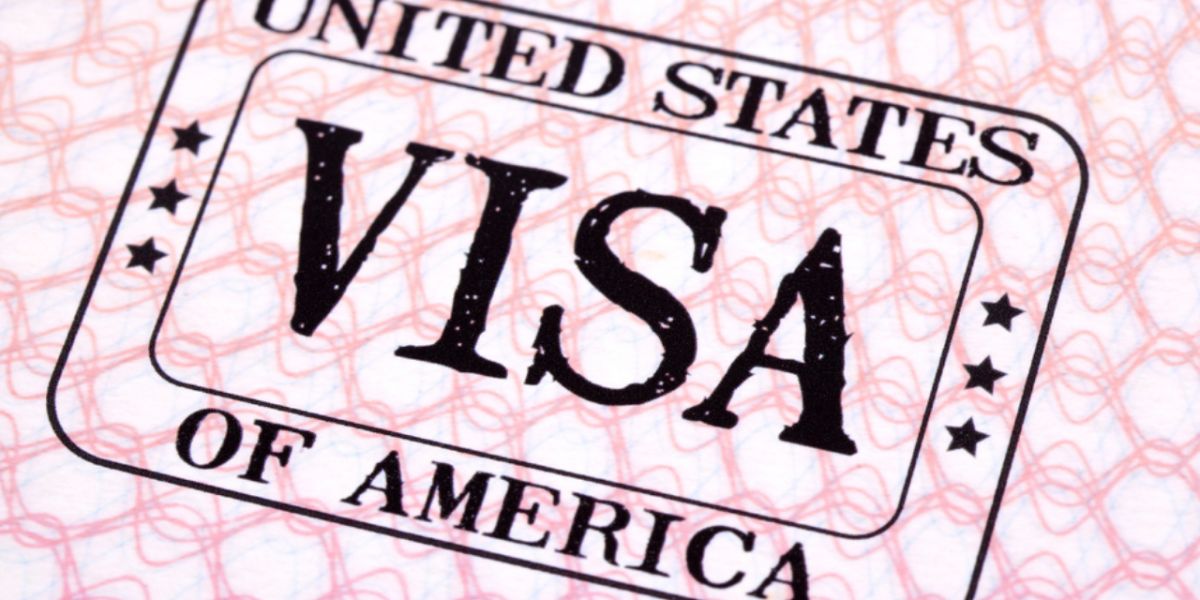
In 2025, the United States was home to 339 million people, according to the US Census Bureau, and in 2024 alone, over 1.8 million individuals were added to the nation, one of the largest population increases in recent years. Migration can be a hot political issue in the USA, but there is no doubt that immigrants play a vital role in the nation's growth and diversity. Recent immigration policy updates have included higher visa fees, new digital processing platforms, mandatory biometric screening for most visa types, and tighter entry verification procedures.
If, like so many others, you are seeking to move to the USA, the first thing you will need to consider is the practicalities of actually being allowed to live and work in the country. Long before the logistics of flights and accommodation are entered into, you need to figure out which visa category fits your situation and whether you qualify for sponsorship or permanent residence.
Non-immigrant visas vs. Visitor visas in the US
According to the Department of State, the US issues around 185 different types of visas . This article will not cover all 185 visas – but we will look into some of the most common visa types for entry into the US for international visitors, workers, students, and residents.
In the United States, visas are broadly categorized into two main types: immigrant visas and non-immigrant visas. These categories distinguish between individuals who intend to permanently reside in the US (immigrants) and those who plan to stay temporarily for specific purposes (non-immigrants). Although we will delve into these visa categories in more detail below, here is a basic breakdown of immigrant vs. non-immigrant visas.
All visa applicants must now submit digital forms (DS-160 or DS-260), upload supporting documents electronically, and provide fingerprints and facial scans during processing. ESTA and visa applicants are subject to enhanced background and eligibility checks introduced in late 2024.
As of April 2025, all supporting documents for any US visa application must be digitally uploaded at least 72 hours before your in person interview.
Your DS-160 barcode must exactly match the barcode used to book your interview appointment or your application will be automatically denied and the visa fee not returned.
Non-immigrant visas include:
- Tourist and visitor visas (B): Including B-1 for business visitors and B-2 for tourists and individuals seeking medical treatment;
- Student visas (F and M): For individuals pursuing academic or vocational studies in the US;
- Work visas (H, L, O, P, etc.): Including H-1B for specialty occupation workers, L-1 for intracompany transferees, O-1 for individuals with extraordinary ability, P visas for athletes, entertainers, and artists; TN/TD visas for citizens of Canada and Mexico under the USMCA trade agreement, E-3 visa for Australians in specialty occupations, I visa for journalists/media representatives, R visa for religious workers, E-1/E-2 treaty trader/investor visas.
- Exchange visitor visas (J): For participants in exchange programs, including students, researchers, and cultural exchange participants;
- Diplomatic and official visas (A and G): For representatives of foreign governments and international organizations;
- Temporary protected status (TPS): A humanitarian status for individuals from designated countries facing ongoing conflict or natural disasters. This is not technically a visa but an immigration status.
Immigrant visas include:
- Family-sponsored visas (IR and F): For individuals intending to join close family members who are US citizens or lawful permanent residents;
- Employment-based visas (EB): For foreign nationals with specific skills or qualifications seeking permanent employment in the US;
- Diversity visa (DV): Through the Diversity Visa Program , individuals from countries with low rates of immigration to the US can apply for a lottery-based immigrant visa.
- Other categories include: SB Returning Resident Visa; K-1/K-3 fiancé or spouse visas; SI/SQ for certain Iraqi and Afghan nationals; IR3/IH3/IR4/IH4 for adoption; EB-5 for immigrant investors.
Non-immigrant US visa categories
Visitor visas
These types of visas are granted to those who want to come to the United States to stay for no longer than six months. These include: B1 visas for business visits and B2 visas for tourism visitors. ESTA authorization under the Visa Waiver Program remains valid for two years or until passport expiry, and travellers must now hold an electronic passport and pass enhanced security screening.
Student visas
The F and M visas are issued to people who come to the US for academic and vocational purposes. There are several categories of these visas:
- F1 visas are issued to students;
- F2 visa is issued to dependents of F1 visa holders;
- An M1 visa is granted to those who come to the US for vocational purposes.
There are some situations where a student visa can lead to a longer stay, or even permanent residence, in the USA. This involves transitioning into work related to your field of study and can be achieved in the following ways:
- Optional Practical Training (OPT): Many international students in the US use Optional Practical Training (OPT) as a bridge between their student status and employment. OPT allows students to work in their field of study for up to 12 months (or 24 months for STEM degree holders) after completing their academic program. During this period, students may secure employment and, if desired, employers may sponsor them for a work visa.
- H-1B visa: The H-1B visa is a common employment visa for foreign professionals. To be eligible, individuals typically need a job offer from a US employer willing to sponsor their H-1B petition. The H-1B registration period now opens in March, with digital-only submissions, and approved applicants generally begin work in October. Employer filing fees may soon increase to $100,000; however, this has not yet been signed into law.
- Change of status application: In some cases, individuals may apply for a change of status from F-1 student to another non-immigrant status, such as an H-1B or L-1 visa. This process involves meeting the specific requirements of the desired visa category and adhering to immigration guidelines.
Exchange visitor visas
These visas are meant for those who come to the US to participate in exchange programs:
- J1 visa is for au pairs, temporary scholars, students, teachers and professors, interns and summer work & travel program participants.
- Q visas are granted to people who come to the US as part of a cultural exchange program.
All J and Q applicants must now register in SEVIS and submit forms I-20 or DS-2019 electronically under the new digital visa system.
Temporary work visas
These types of visas are issued to people who come to the US for temporary work. There are several categories of temporary work visas:
- H-1B visa is meant for professionals in specialized fields that require a lot of training and expertise;
- H-1B1 visa is offered to Chile and Singapore nationals in accordance with the US Free Trade Agreement (FTA) with Chile and Singapore. It gives visa holders the right to work and live in the US;
- H-2A visa is issued to agricultural workers from select countries;
- H-2B visa is issued to temporary seasonal workers but not in the agricultural industry. It is only granted to individuals from select countries;
- H-3 visa is given to those who want to undergo specialized training in the US;
- L1 visa is for intracompany managers or executives;
- O visa is open to people with extraordinary abilities in arts, science, business, education, and athletics. There are three types of O visas:
- O1 visas are issued to people with extraordinary abilities,
- O2 visa is issued to the assistants of O1 visa holders,
- O3 visa is granted to the dependents of O1 visa holders;
- P visas are meant for athletes, entertainers, and artists. They are further subdivided into:
- P-1 visa for individual and team athletes or members of entertainment groups,
- P-2 visa for artists/entertainers that perform in the US individually or in a group,
- P-3 visa for artists/entertainers who come to the US to perform, teach, or coach;
- R visa is issued to temporary religious workers who want to practice their beliefs in the United States;
- TN/TD visas are for citizens of Canada and Mexico under the USMCA
- E3 visas are issued to Australian nationals who come to the US to work in specialized fields;
- I visa is meant for journalists. It is typically given out to individuals working for the press, film, radio, or print industries who come to the US to take part in media activities.
All temporary-work petitions must be filed electronically, and in-person biometric screening is required for all applicant
Treaty trader and investor visas
The Treaty Trader (E1) and Treaty Investor (E2) visas are issued to people who have treaties of commerce in the US who wish to carry out substantial trade or investment activities.
Diplomatic and official visas
There are several types of visas issued for diplomatic and other official purposes:
- A1 visa is issued for diplomats and foreign visa officials;
- A2 NATO1-6 visa is meant exclusively for military personnel stationed in the United States;
- G1-G5 NATO visas are issued for those who have been employed by an international organization in the United States.
Visas for victims of crime and human trafficking
- T visa is granted to victims of human trafficking. It is meant for people who have gone through severe trauma and can also help with investigations of related crimes;
- U visas apply to victims of crime. People who have been victims of certain criminal activities and can assist in the investigation.
Eligibility for T and U visas was expanded in 2025 under new humanitarian and parole provisions.
Transit and crewmember visas
There are several categories of these visas:
- C visa is for transit;
- D visa is for crew members who intend to work on a sea vessel or an international airline.
Immigrant US visa categories
Immediate relative and family sponsored visas
These visas are meant for family and relatives of those residing in the US:
- F2A and F2B visas are issued to family members of US permanent residents: their spouses, minor children, unmarried sons and daughters aged 21 or above;
- IR-2 visa is meant for unmarried children under 21 years old;
- IR5 visa is for parents of US citizens who are at least 21 years old;
- F1 visa is for unmarried sons and daughters as well as their minor children;
- F3 visa is issued to married sons and daughters as well as their minor children;
- F4 visa is meant for siblings of US citizens, their spouses and minor children;
- IR3, IH3, IR4 and IH4 are adoption visas meant for children from other countries who are about to be adopted by US citizens.
Fiance and spouse visas
There are several types of fiancé and spouse visas:
- K3 visas are for spouses of US citizens who are in the process of applying for their permanent immigration status;
- IR1 and CR1 are visas issued to spouses of US citizens;
- K-4 visas are for children of K-3 visa holders.
Employer-sponsored visas
These visas are issued to immigrant employees:
- EB-1: for priority workers with extraordinary abilities, researchers, or executives.
- EB-2: for professionals with advanced degrees or exceptional ability.
- EB-3: for skilled workers and professionals with U.S. job offers.
- EB-5 visa is offered to immigrant investors;
- SI visa is issued to Iraqi and Afghan Translators or Interpreters who work for the US military;
- SQ visas are meant for Iraq or Afghan citizens working with the US government;
- Diversity Immigrant Visas are issued to people who come from countries with low immigration rates to the US;
- SB visa (Returning Resident Visa) is meant for permanent US residents who had to remain outside the US for reasons out of their control and their re-entry permits are not valid anymore.
As of 2025, all of the employment-based immigrant petitions (PERM and I-140) can be filed through the Department of Labor's online portal, with processing updates now available in real time.
Do you need a visa to the US?
In most cases, you will need a visa to visit the US. However, if you are eligible for the Visa Waiver Program or are a citizen of Bermuda or Canada, you will be able to travel to the country visa-free for up to 90 days. The purpose of your visits must be the same as of B1 (business visit) or B2 visa (tourism) holders.
The Visa Waiver Program lets people from 39 countries travel to the US visa-free for tourism and business purposes. Always check the official list for the most up-to-date information, as participation may change.
As of late 2025, eligible VWP countries include: Andorra, Australia, Austria, Belgium, Brunei, Chile, Croatia, Czech Republic, Denmark, Estonia, Finland, France, Germany, Greece, Hungary, Iceland, Ireland, Italy, Japan, Latvia, Liechtenstein, Lithuania, Luxembourg, Malta, Monaco, Netherlands, New Zealand, Norway, Poland, Portugal, San Marino, Singapore, Slovakia, Slovenia, South Korea, Spain, Sweden, Switzerland, Taiwan, and the United Kingdom.
Note that if you are a citizen of one of the countries above, you can visit the US visa-free. However, you will need to apply for the Electronic System for Travel Authorization (ESTA) from the US Customs and Borders Protection's (CBP).
All travelers also need to have an electronic passport with biometric information.
Travelers who have visited, or are nationals of, Iran, Iraq, Syria, North Korea, Sudan, Libya, Somalia, or Yemen since March 1, 2011, are not eligible for the VWP and must apply for a visa.
Applying for a US visa
Applying for a US visa usually involves filling out an online application and scheduling an appointment at the embassy for an interview. The specifics of the process, needed documents, and possible interview questions will depend on the type of visa you are applying for. Some situations are more complex than others, and you may require the services of a professional to help you. However, many visa applications are relatively simple and can be done independently. Always make sure to read the instructions carefully and refer to the consulate and USCIS web pages for the most up-to-date information and estimates of processing times.
Good to know:
As of September 2025, almost all non-immigrant visa applicants, including renewals and regardless of age, must attend an in-person interview at a US embassy or consulate. Only very limited interview waivers remain.
Entry into the US
It's important to note that possessing a valid US visa DOES NOT guarantee entry into the country. The body that makes the decision on whether you can enter the US is the Border Patrol.
When you arrive in the US, you will first be required to go through immigration and then customs to verify your identity and background. A decision will then be made regarding your entry and stay in the country.
Border Patrol officials have the authority to detain you and ask you questions. They also have the right to deny you entry into the US and to make arrangements for your return home. When interviewed by immigration officers, it is essential that you answer all questions truthfully. Providing false information can lead to your entry into the country being denied.
In most cases, the immigration officers' questions will be aimed at confirming that the purpose of your visits matches your visa type and that you do not pose a threat to the safety and security of American people and visitors to the country.
What to do if you are denied a US visa?
In most cases, you will know the result of your visa application after the interview at the embassy or consulate. If your application has been approved, you will be informed on when and how to pick up your passport or visa. If it has been denied, your documents will be returned to you immediately.
There may be several reasons why a visa application may be denied:
- The consular officer may not have enough information to make the decision;
- The applicant may not qualify for the type of visa they are applying for;
- The information provided by the applicant may indicate that they are ineligible for a US visa;
- And others.
If your visa application is denied, there are two possible courses of action:
- You can appeal the decision of the consular officer;
- Or you can apply for a new visa.
In most cases, it is recommended to apply for a new visa rather than file an appeal. When applying for a new visa, you will need to make changes to your application (present additional documentation, choose a different visa category, etc.).
Be aware that you will not be refunded the costs of applying for the visa even if you are denied. Your costs pay for processing and administration.
Bringing relatives or children to the US
Most US visas will allow you to bring your children to the United States, provided they are minors (under 18 or under 21, depending on the type of visa you have). Adult children won't get visas automatically if their parents request US visas unless they can not take care of themselves and are dependent on their parents. Parents and other relatives are not eligible to accompany temporary visa holders except under specific immediate-family immigrant categories
Most temporary (non-immigrant) visas do not allow you to bring parents or other extended family members. Parents and other relatives are not considered to be immediate defendants and, therefore, won't be granted visas automatically. With that, it is worth looking into the Immediate Relative or Family-Based Immigrant visas. These types of visas may allow you to sponsor your relatives for an immigrant visa to the US.
The Diversity Lottery
The Diversity Visa (DV) Lottery is a unique pathway for individuals seeking to immigrate to the United States when traditional visa categories may not align with their circumstances. Not everyone has a career that may result in sponsorship or a spouse who is a US citizen. If you cannot find a visa category that fits your situation, the Diversity Visa may be your best bet. Also known as the Green Card Lottery, it offers a chance for citizens of countries with lower rates of immigration to the US to secure a coveted immigrant visa. This lottery system provides a valuable opportunity for those who might not qualify under specific employment or family-sponsored categories.
All applications must be submitted online using a current photo. List all unmarried children under 21, even if they are not immigrating. There is no fee to enter; beware of fraud and only use the official website.
Useful links:
US embassies and consulates abroad
We do our best to provide accurate and up to date information. However, if you have noticed any inaccuracies in this article, please let us know in the comments section below.








